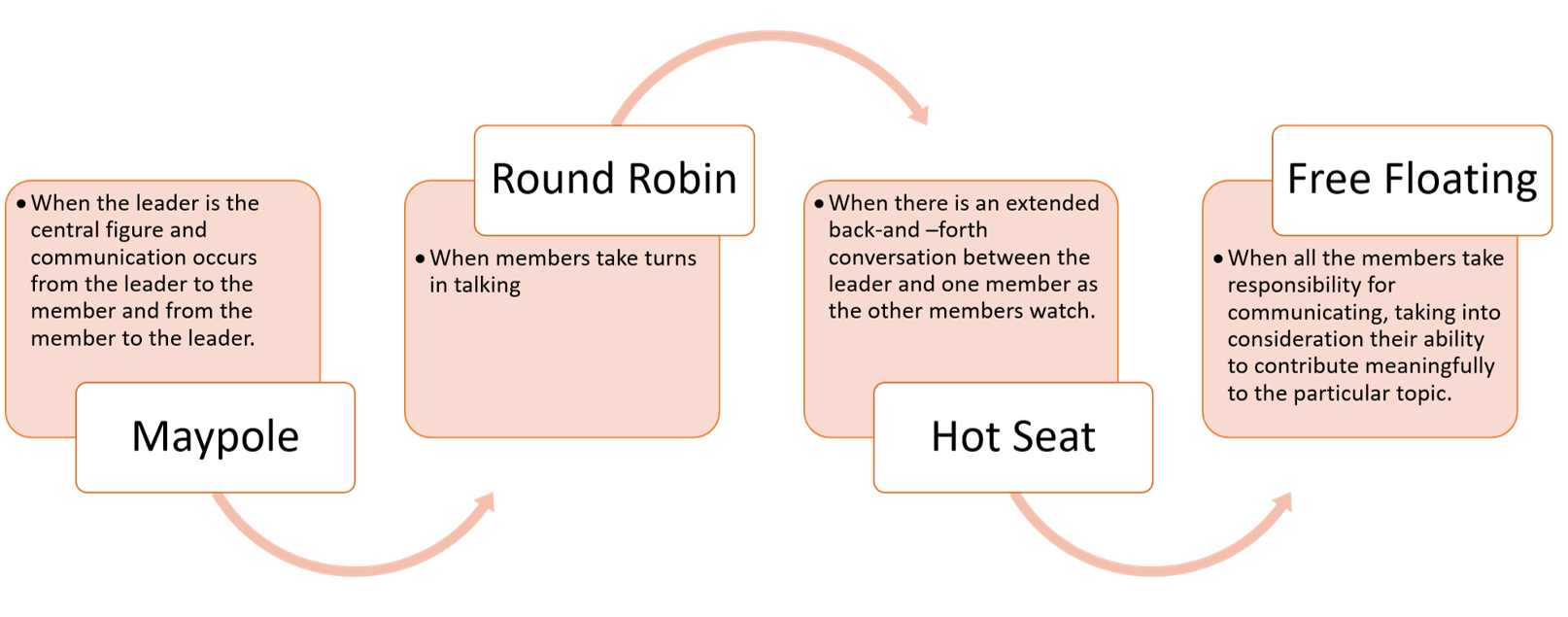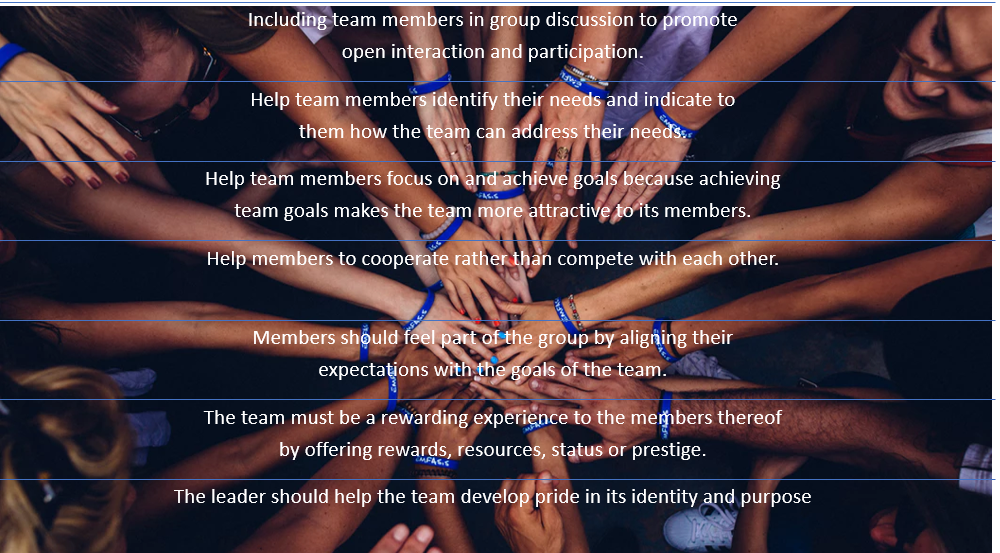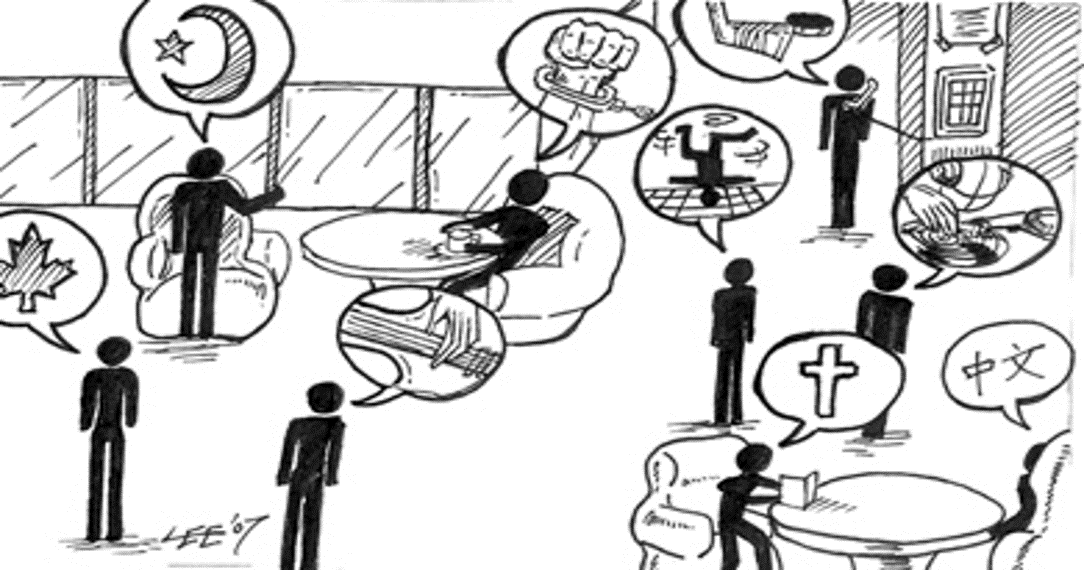One of the most important tasks of the team leader is to help the team develop dynamics that helps the team achieve its goals and makes the members of the team feel good to be part of that team.
Click here for a short video on ten questions you can ask to analyse the dynamics in your team.
Four dimensions of team dynamics are important, being: Communication and Interaction patterns; Cohesion; Social Integration, and Influence and Group Culture.
Communication and Interaction Patterns

Communication is the process whereby people send meaning to each other by using symbols (words or gestures). Whenever people are together in face-to face teams, they are communicating with each other. Even if they are not communicating verbally, their non-verbal behaviour communicates intended and unintended messages.
As the members of a team communicate with each other, a pattern of interaction develops. This means that they will also communicate in that specific way. This pattern can be beneficial or harmful. Read the following two examples of interaction patterns that are beneficial and another example of a harmful interaction pattern.

It is important for the leader of the team to be aware of the interaction patterns in the team and whether it is beneficial or harmful to the team. It is particularly important for you as leader to pay attention to nonverbal messages that are communicated by your group members. When you are aware of their nonverbal messages, you can verbalize the messages that are conveyed in them; and this in turn may encourage your group members to talk about the issues that they do not want to express verbally.
Communication can also be distorted when they are being transmitted. “Distorted” means that the message is vague and not clear. The most common problem is language barriers. If your team members have different languages, care should be taken to ensure that members of your team understand what is being said and that they feel comfortable to take part in group discussions.
Giving and receiving feedback is a way to check that members understood you correctly. Examples of feedback are: “John, I understood you to say…” or “Mary, if I understand you correctly, you are saying…” Feedback and clarification can help to prevent communications from being interpreted in unintended ways.
The leader in a team must also be aware of patterns of interaction in a group. The different patterns of interaction are:

The first three patterns are leader centred because the leader structures them. The fourth pattern is group centred because it emerges from the group members. The best interaction pattern is the last, because members of the team feel free to interact with one another and the communication channels are open. Thus, it increases social interaction and improve member’s morale and commitment to group goals.
Group Cohesion

Click here to view a short video demonstrating the beauty and impact of cohesion in teams.
Group cohesion refers to the forces (the glue) that keep a team together. These could include the need to belong and feel safe; the resources and prestige they will gain through the team or group members believe in the team’s ability to perform a specific task.
If the group cohesion is strong, team members are more willing to listen, they feel self-confident, they persevere towards goals and they are willing to take responsibility for group functioning
In order to increase group cohesion, it is the responsibility of the team leader to make the team attractive to them. This could be done through:

One of the tools a team leader can use to make teams more attractive is by setting achievable goals for the team and by motivating and empowering them to achieve these goals.
A big part of what team members need from their leaders is a clear understanding of what is expected - in other words - explanation and clarification and agreement of performance expectations.
A second big part of what team members need from their leaders is help in meeting these standards and expectations - which logically requires the to first find out what help they need, because it's different for everyone, and if you don't ask then you won't know. So why guess? Ask people what they need.
When setting performance standards (in other words, what is expected and how they will be measured), make sure that it is written down and that all parties involved agree on the standards. It is the responsibility of the team leader to get feedback from the team members about whether the standards and expectations are understood properly.
Social Integration and Influence

Social integration refers to how members fit together and are accepted in a team.
Teams are not able to function effectively unless there is a fairly high level of social integration among the members.

Norms, roles and status lend order and familiarity to group processes, helping to make member’s individual behaviour predictable and comfortable for all.
Norms are shared expectations and beliefs about appropriate ways to act in a social situation such as a team. It can also be described in simpler terms as “rules” that tells team members what is the “right” thing to do and what are the “wrong” things to do in that particular team. Norms normally develops as the team develops. The norms will be determined by the values of the team. Values are the things that people value and hold dear. Normally, one’s values are taught during his childhood years and are also determined by a person’s cultural beliefs.
Like norms, roles can also be an important influence on team members. Roles define behaviour in relation to a specific task or function that the team member is expected to perform. Roles are important in a team because they ensure that tasks are equally distributed.
Status refers to the ranking of each team member relative to all the other members of the team. A person’s status is determined by his position and level of expertise in the team. Team members with low status are least likely to conform to group norms because they have little to lose by deviating. For this reason, low-status team members have the potential to cause problems in teams.
Medium status team members tend to conform to group norms because they can retain their status or even achieve higher status by doing what is expected of them. Therefore, team leaders should provide opportunities to low-status team members to contribute to the group so that they can become more socially integrated and achieve higher status.
Group Culture

Group culture refers to values, beliefs and customs held in common by team members.
The culture of a team can be displayed through:
- Symbols and rituals
- The way team members interact with each other
- The way team members deal with conflict
- Things that are important to the team.
The group culture has a powerful influence on its ability to achieve its goals and satisfying the needs of the members of the team. A culture that emphasizes values of self determination, openness, fairness and diversity helps the members of the team to achieve the goals of the group.